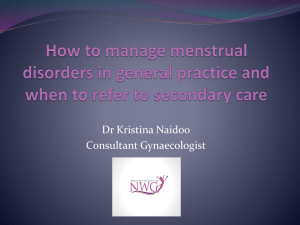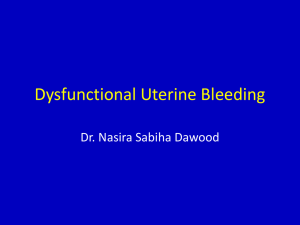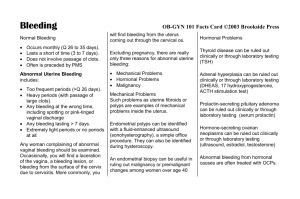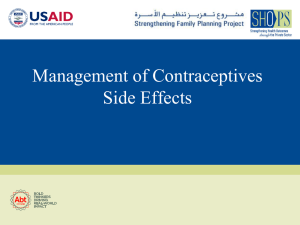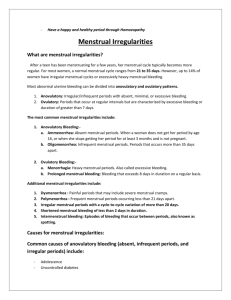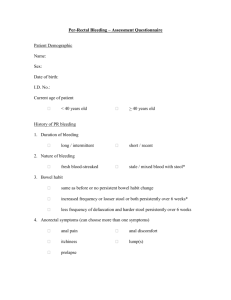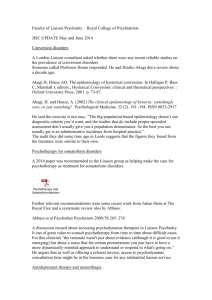DC and hysteroscopy for heavy menstrual bleeding
advertisement
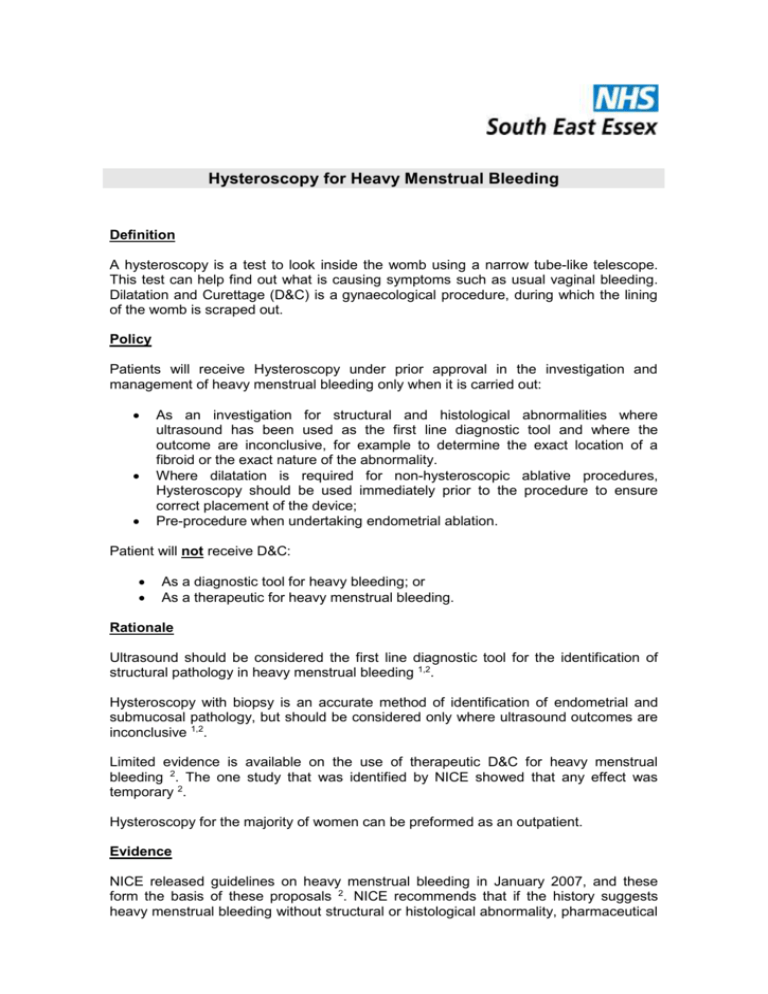
Hysteroscopy for Heavy Menstrual Bleeding Definition A hysteroscopy is a test to look inside the womb using a narrow tube-like telescope. This test can help find out what is causing symptoms such as usual vaginal bleeding. Dilatation and Curettage (D&C) is a gynaecological procedure, during which the lining of the womb is scraped out. Policy Patients will receive Hysteroscopy under prior approval in the investigation and management of heavy menstrual bleeding only when it is carried out: As an investigation for structural and histological abnormalities where ultrasound has been used as the first line diagnostic tool and where the outcome are inconclusive, for example to determine the exact location of a fibroid or the exact nature of the abnormality. Where dilatation is required for non-hysteroscopic ablative procedures, Hysteroscopy should be used immediately prior to the procedure to ensure correct placement of the device; Pre-procedure when undertaking endometrial ablation. Patient will not receive D&C: As a diagnostic tool for heavy bleeding; or As a therapeutic for heavy menstrual bleeding. Rationale Ultrasound should be considered the first line diagnostic tool for the identification of structural pathology in heavy menstrual bleeding 1,2. Hysteroscopy with biopsy is an accurate method of identification of endometrial and submucosal pathology, but should be considered only where ultrasound outcomes are inconclusive 1,2. Limited evidence is available on the use of therapeutic D&C for heavy menstrual bleeding 2. The one study that was identified by NICE showed that any effect was temporary 2. Hysteroscopy for the majority of women can be preformed as an outpatient. Evidence NICE released guidelines on heavy menstrual bleeding in January 2007, and these form the basis of these proposals 2. NICE recommends that if the history suggests heavy menstrual bleeding without structural or histological abnormality, pharmaceutical 2 treatment can be started without carrying out a physical examination or other investigations at initial consultation in primary care, unless the treatment chosen is levonorgestrel-releasing intrauterine system (LNG-IUS). A physical examination should be carried out before all LNG-IUS fittings. If the history suggests heavy menstrual bleeding with structural or postcoital bleeding, pelvic pain and/or pressure symptoms, a physical examination and/or other investigation (such as ultrasound) should be preformed. Numbers of people affected Procedure Numbers by Locality for 2008 D&C Hysteroscopy LOCALITY NUMBER North East Essex PCT West Essex PCT Mid Essex PCT South West Essex PCT South East Essex PCT 263 368 554 778 870 References 1. SIGN guideline. Investigation of post-menopausal bleeding. Selection 4: Investigation techniques (2002) http://www.sign.ac.uk/guidelines/fulltext/61/section4.html 2. NICE Clinical Guideline 44. Heavy Menstrual Bleeding. January 2007 3. Black’s Medical Dictionary. 40th edition. A&C black. London 2002. Glossary Endometrial ablation Hysteroscope Ultrasound Postcoital Heavy menstrual bleeding Destruction / removal of the lining of the womb. Is an examination of the uterus and the surface of the endometrium (mucous membrane lining the interior of the womb) using a hysteroscope. The use of ultrasonic waves for diagnostic or therapeutic purpose, specifically to image an internal body structure, monitor a developing foetus, or generate localised deep heat to the tissue. After intercourse. Excessive menstrual blood loss which interferes with a women’s physical social, emotional and/or material quality of life. It can occur alone or in combination with other symptoms. Surgical Threshold Policy Hysterectomy for Heavy Menstrual Bleeding – Service Design and PBC Draft January 2010 Adapted from the London Network Policies and Cambridge and Peterborough Public Health Network August 2007 D:\308866938.doc

